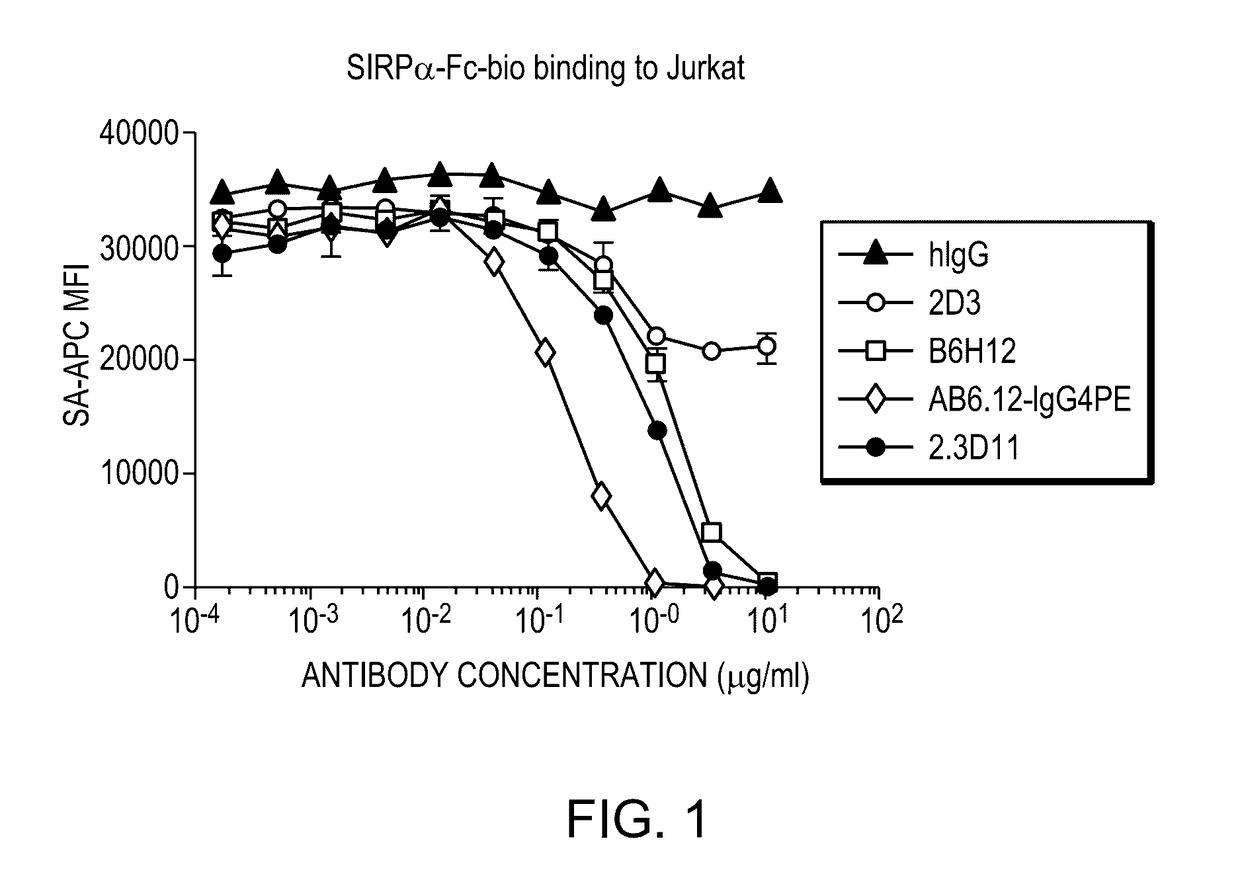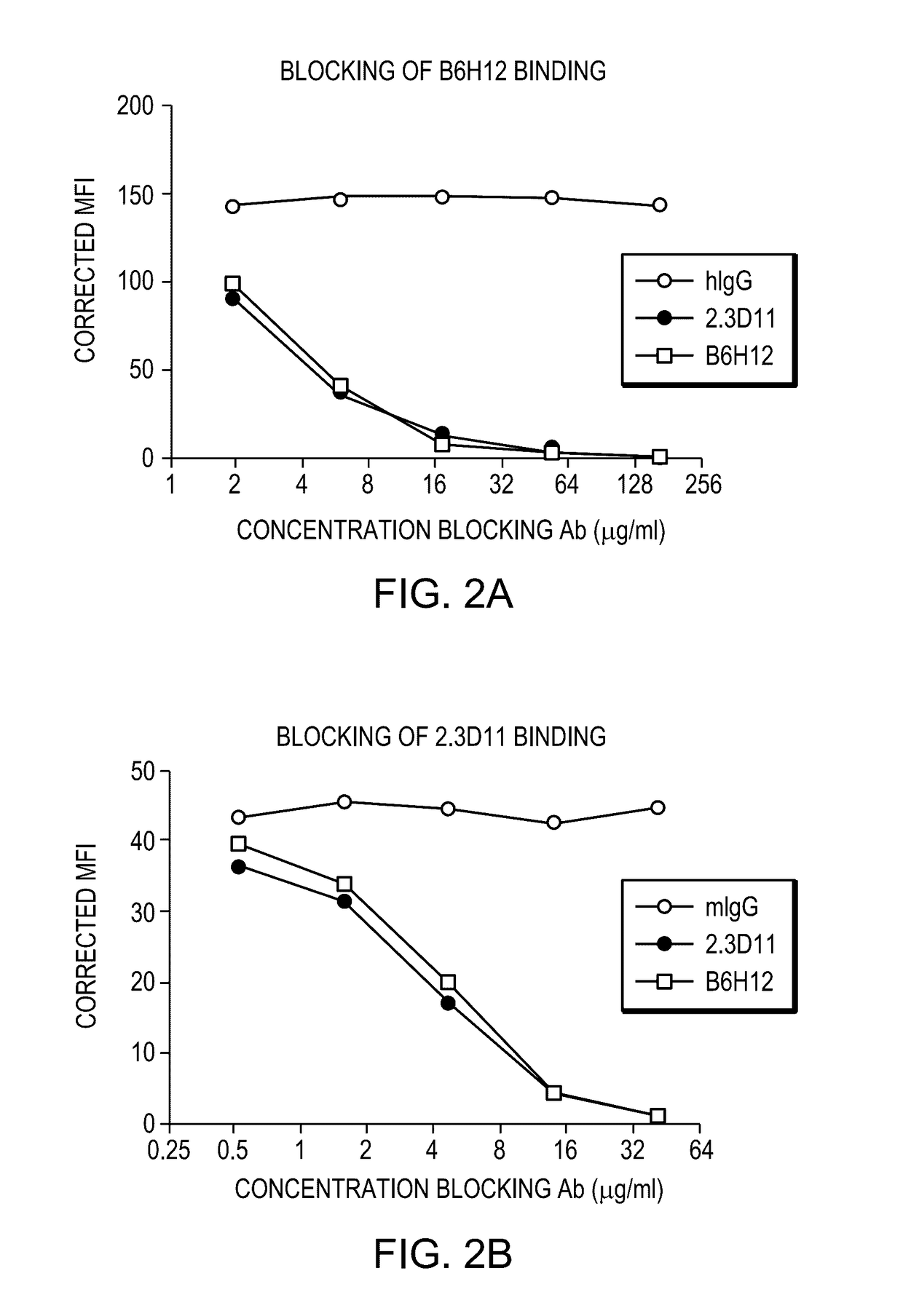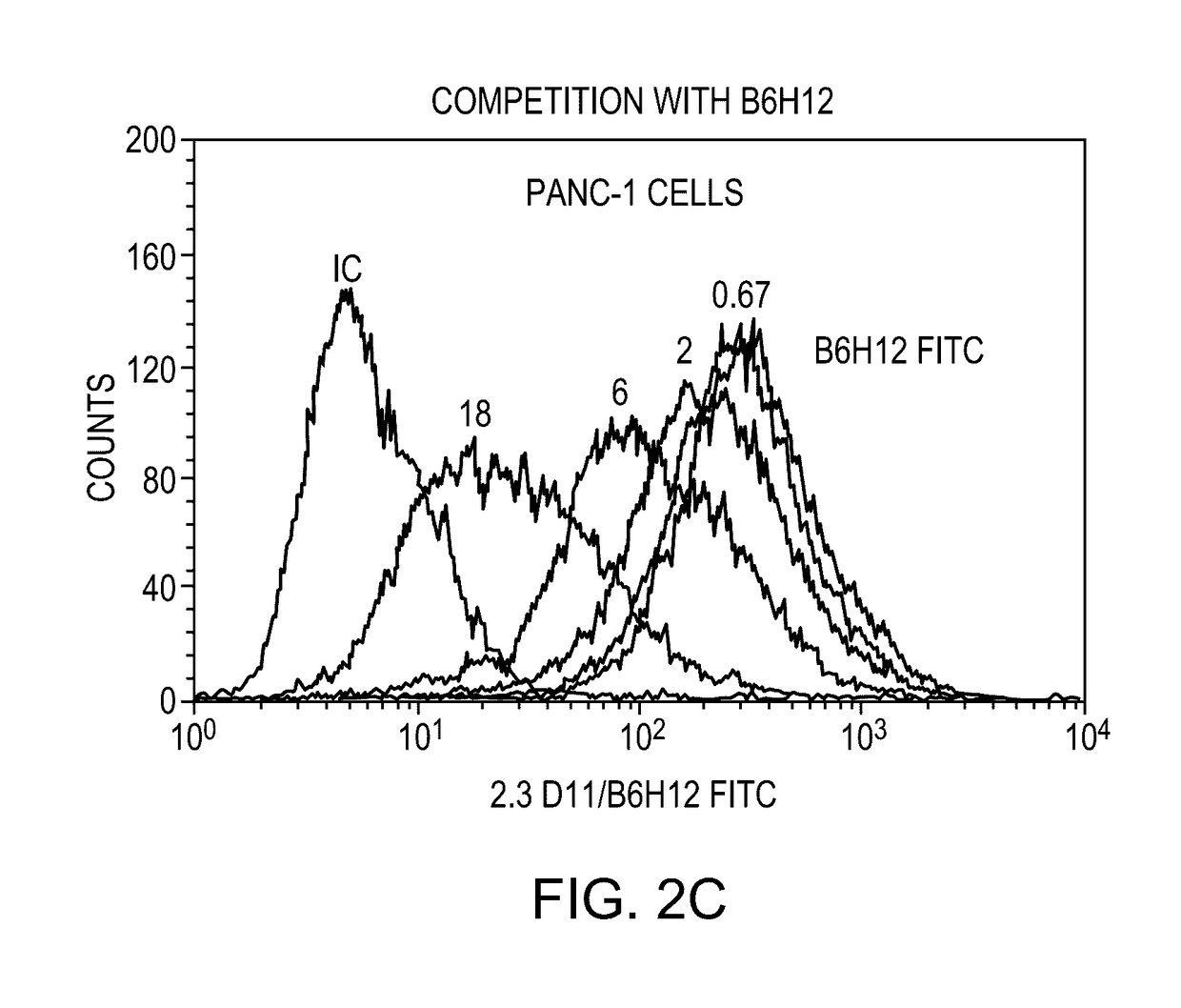Anti-cd47 antibodies and methods of use
a technology of anti-cd47 antibodies and methods, applied in the field of molecular biology, immunology and oncology, can solve the problems of limiting the therapeutic utility of anti-cd47 antibodies, and achieve the effects of enhancing phagocytic activity, enhancing macrophage activity, and enhancing macrophage activity
- Summary
- Abstract
- Description
- Claims
- Application Information
AI Technical Summary
Benefits of technology
Problems solved by technology
Method used
Image
Examples
example 1
Generation of Anti-CD47 Antibody Molecules
[0203]This example describes the production of anti-CD47 antibodies in mice.
[0204]Genetically engineered mice carrying a human immunoglobulin immune repertoire in place of the murine repertoire (Harbour Antibodies BV) were immunized with soluble CD47-Fc fusion protein. Twenty-eight hybridomas expressing anti-CD47 monoclonal antibody molecules were isolated following fusion of splenocytes with a myeloma cell line, screening and cloning. Isolated hybridomas included hybridomas expressing antibody molecules referred to as 2.3D11, 4.2B4, 4.2C11, 4.1H12, 4.12E2, 2.15A5, 2.7B6, 2.12F6, 2.15E4, 2.3A9, 2.5E6, 2.6D3, 4.2C4, 2.3D3, 2.9F9, and 2.1D2. The isolated hybridomas expressed antibody molecules having both heavy and light chains with fully human variable domains and rat constant domains.
[0205]Exemplary isolated anti-CD47 antibody 2.3D11 (hereafter referred to as “2.3D11”) was sequenced and further characterized below.
The heavy chain of the isol...
example 2
In Vitro Characterization of Anti-CD47 Antibodies
[0207]The 2.3D11 antibody generated in Example 1 was tested in a set of in vitro assays to ascertain their biological characteristics and activities. The 2.3D11 antibody was found to potently inhibit the interaction between CD47 and SIRPα and enhance phagocytosis of tumor cells. Surprisingly and unexpectedly, 2.3D11 was found to cross compete with reference antibody B6H12 for binding to CD47, even though, unlike B6H12, 2.3D11 does not induce hemagglutination or red blood cell phagocytosis.
I—SIRPα Blocking Activity
[0208]SIRPα is a natural ligand of CD47. The ability of 2.3D11 to block the CD47-SIRPα interaction was measured using a flow cytometry based assay, wherein Jurkat cells, which express CD47, were incubated with an anti-CD47 antibody or a control monoclonal antibody (antibodies titrated 10 μg / ml-0.17 ng / ml in 3 fold dilution series), washed and then incubated with SIRPα-Fc-bio (7.5 μg / ml; determined as ˜EC70 from previous titra...
example 3
In Vivo Efficacy of Anti-CD47 Antibody in Tumor Models
[0220]The anti-tumor activity of 2.3D11, produced as either a wild-type human IgG4 (“2.3D11 IgG4”) or S228P / L235E double mutant human IgG4 (“2.3D11 IgG4mt”), as described in Example 1, was evaluated in the Burkitt's lymphoma Raji xenograft model.
[0221]Female CB.17 SCID mice were injected subcutaneously with 1×107 Raji B tumor cells in 50% Matrigel and treatment was started when tumors reached 100 mm3. Isotype control, 2.3D11 IgG4 and 2.3D11 IgG4mt antibodies were injected intraperitoneally (i.p.) three times per week, for 3 weeks at the indicated doses. Rituximab was injected i.p. at 5 mg / kg once a week for 3 weeks. Body weight and tumor volume were measured twice per week.
[0222]The antitumor efficacy of 2.3D11 IgG4 and 2.3D11 IgG4mt (200 μg / mouse, t.i.w.) were compared in the Raji model of Burkitt's lymphoma. As shown in FIG. 10A, both the 2.3D11 IgG4 and 2.3D11 IgG4mt antibodies demonstrated anti-tumor activity in this xenograf...
PUM
| Property | Measurement | Unit |
|---|---|---|
| concentrations | aaaaa | aaaaa |
| concentrations | aaaaa | aaaaa |
| concentrations | aaaaa | aaaaa |
Abstract
Description
Claims
Application Information
 Login to View More
Login to View More - R&D
- Intellectual Property
- Life Sciences
- Materials
- Tech Scout
- Unparalleled Data Quality
- Higher Quality Content
- 60% Fewer Hallucinations
Browse by: Latest US Patents, China's latest patents, Technical Efficacy Thesaurus, Application Domain, Technology Topic, Popular Technical Reports.
© 2025 PatSnap. All rights reserved.Legal|Privacy policy|Modern Slavery Act Transparency Statement|Sitemap|About US| Contact US: help@patsnap.com



